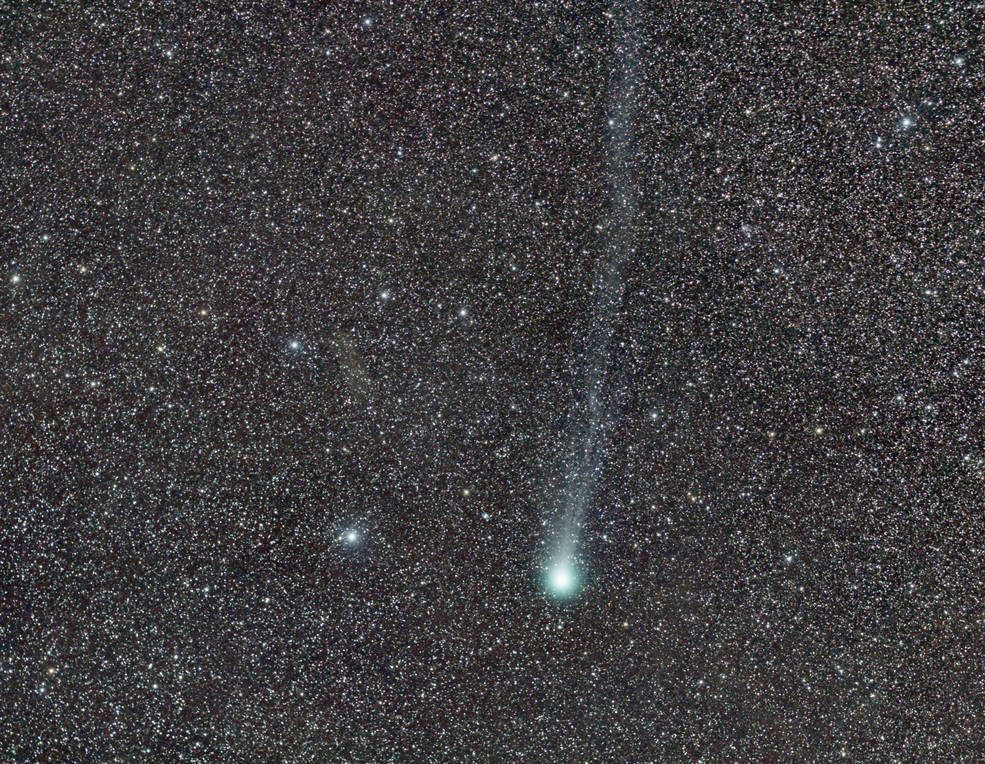FOUND: A Comet Stocked With Booze

Comet Lovejoy (Image: Fabrice Noel/NASA)
Comet Lovejoy passed close to Earth this winter, and it was exceptionally bright. Not since 1997 has such an active comet passed by our planet; you could see this one with the naked eye, for a few months.
Lovejoy also passed close to the sun, which heated it up. Excited by that energy, the molecules that made up the comet started giving off signals that revealed their identities. And when a team of astronomers took the opportunity to look closely at what those molecules were, they found a compound that had never been seen in a comet before.
Booze.
For the first time, astronomers documented the presence of ethyl alcohol, the same compound that gets us drunk, in a comet. They also found, for the first time, glycolaldehyde, a simple sugar. These were two of 21 organic molecules detected in the comet’s make-up; the team reported their findings in Science Advances.
Comets give hints of what was present at the formation of our solar system, and the presence of these complicated compounds adds evidence to the picture of how our current planetary situation came to be. If comets contain complex compounds, they may also have been responsible for depositing them on Earth.
That would give this planet a head start on developing life: organisms on Earth would have more to work with than just simple molecules like carbon monoxide and nitrogen. Like the wine and beer we drink today, these more complicated molecules could have helped get the party started.
Bonus finds: Prehistoric shark teeth, blue lobster
Every day, we highlight one newly lost or found object, curiosity or wonder. Discover something unusual or amazing? Tell us about it! Send your finds to [email protected].









Follow us on Twitter to get the latest on the world's hidden wonders.
Like us on Facebook to get the latest on the world's hidden wonders.
Follow us on Twitter Like us on Facebook